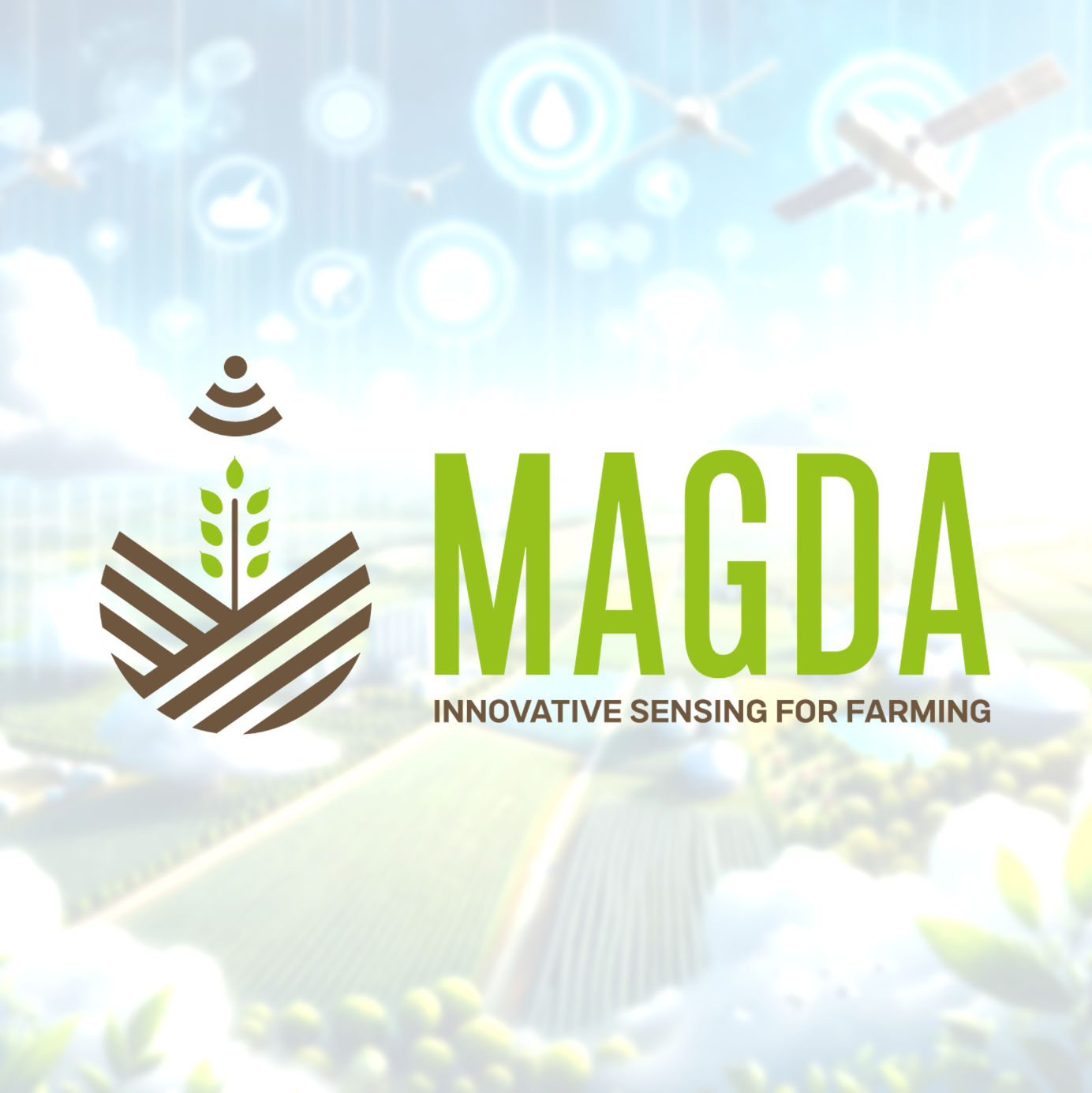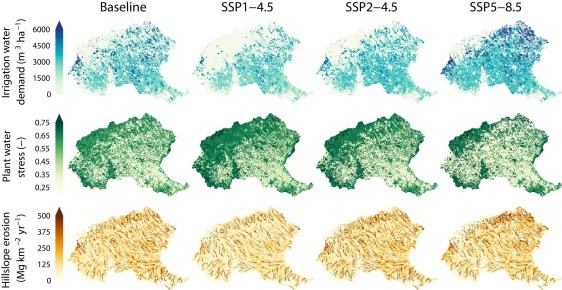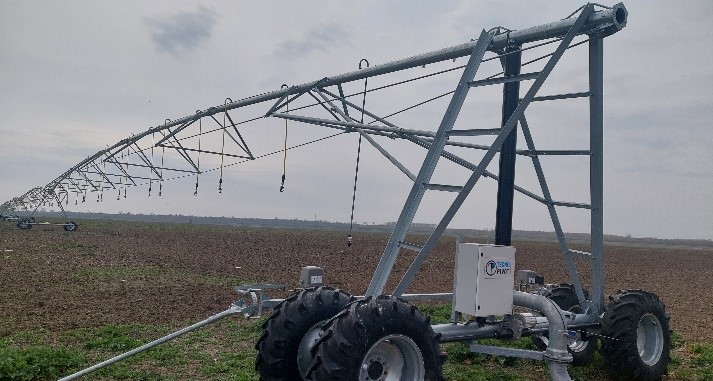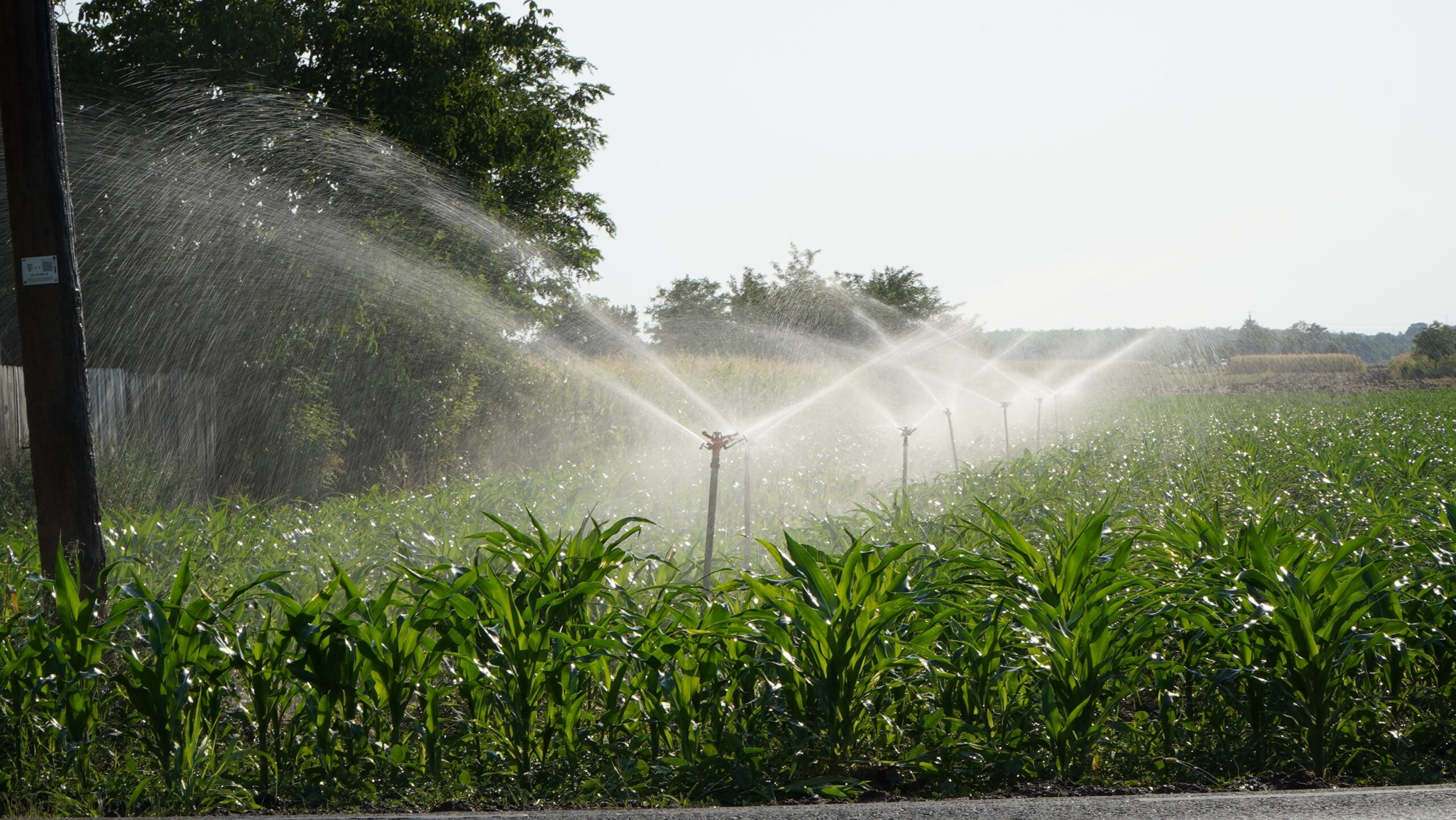
Monitoring soil moisture for cereals as adaptation measure of irrigated agriculture to climate change in the Braila County, Romania
Climate change will impact irrigated agriculture by increasing the rainfall variability and average temperatures. Numerical experiments with climate models show that in the future this trend will continue but its evolution will strongly depend on the anthropogenic emission levels of greenhouse gases (IPCC et al., 2021). However, because human-induced warming is superimposed on natural climate variability, the effects of climate change have not been, and will not be, uniform across regions or over time. In some areas of the world, annual precipitation will decline, decreasing river flows and groundwater recharge, while in other places, total precipitation may increase but it will fall over shorter periods with greater intensity so that dry spells are longer (IWMI).
Analysing the projected changes in extreme agro-climatic indicators in the southern part of Romania, Caian et al. (2023) showed that thermal changes are continuous in time with acceleration after 2040 and with higher amplitude in RCP85, reaching up to ~3°C, that is well above the multiannual global average estimated to be critical for climate risk. The precipitation regime changes more slowly in this part of Romania: the number of days with precipitation decreases in all Southern parts of the country. This study reveals that Southern Romania appears as a regional hot-spot of climate change because the projected changes are higher and more accelerated than other regions of the country. In this context, farmers will need to improve crop water allocation for sustainable irrigation as an adaptation measure to climate change.
Irrigation scheduling
Irrigation is the largest consumer in the agriculture sector, and the efficient use of water is of utmost importance (Koech and Langat, 2018). Therefore, the use of modern technologies for irrigation water management is helping to resolve the water scarcity challenges and will bring benefits to farmers (Fouial et al 2020). Monitoring soil moisture will improve water allocation in space and time in irrigated agriculture.
The soil water storage (SWS) is the total amount of water that is stored in the soil within the plant’s root zone and monitoring the changes in SWS allow the farmers to optimise the amount of water to be applied and how long to wait between each irrigation. From the total soil water, only a portion (water holding capacity) is readily available for crops (Fig. 1). Availability coefficients determined experimentally for each crop can be used to calculate the percentage of water that is readily available to the plant. The right moment to apply irrigation can be chosen using the maximum water deficit (MSWD) that corresponds to the amount of water stored in the soil that is readily available to the plant. Once consumed this amount, it must be replaced by irrigation (B.C. Ministry of Agriculture).
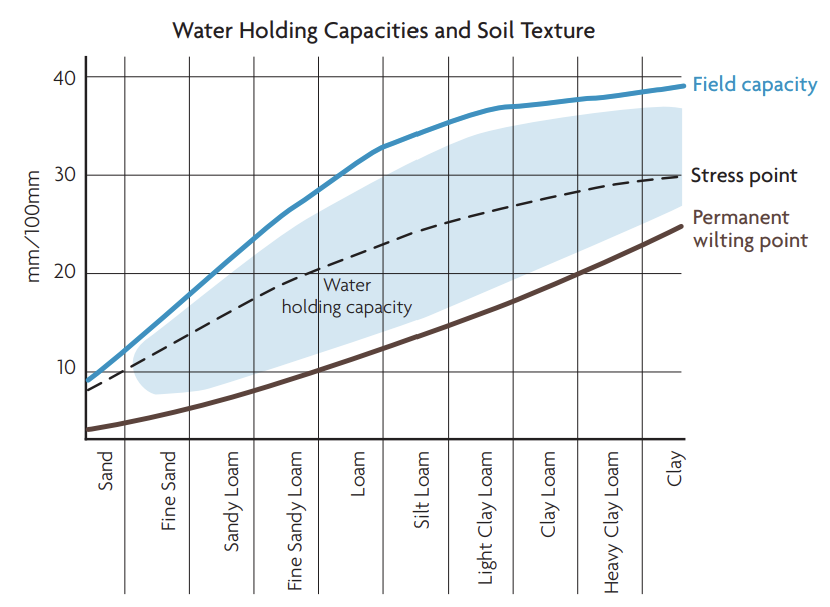
Soil moisture monitoring
Braila County has the largest irrigated areas in Romania and efficient water allocation will mitigate the environmental issues related to water scarcity and soil degradation by salinization and erosion. The climate of this area is continental, with dry summers and cold winters. The mean annual precipitation is 450 mm, while the mean annual potential evapotranspiration exceeds 800 mm. The agro-climatic conditions require the use of irrigation to avoid crop losses and to ensure high crop productivity (Grumeza et al., 1989, Chitu et al., 2020).
In the framework of MAGDA Project, in-situ soil moisture sensors have been installed at different depths to assess the changes in soil water storage as well as crop water consumption (Fig. 2). The clay loam soils located in the Embanked Great Island of Danube, Braila, have high water storage (FC = 0.40 m3/m3) and most of the water can be abstracted by the plant (WP 0.15 m3/m3 resulting in high water holding capacity (WHC = 0.25 m3/m3). Continuous monitoring of soil moisture at different depths on soil profile for maize water consumption between April and September 2023 showed that water resources represented by rainfalls and capillary rise ensured the optimal crop water needs for maize (Fig. 3). The drought that started in August 2023 and continued until the end of October didn’t affect the summer crop, but had a negative impact for winter crops, delaying the start of the new crop year. These results revealed that continuous monitoring of soil water content on soil profile can considerably improve water allocation in irrigated agriculture and it can be seen as an adaptation measure to climate change.
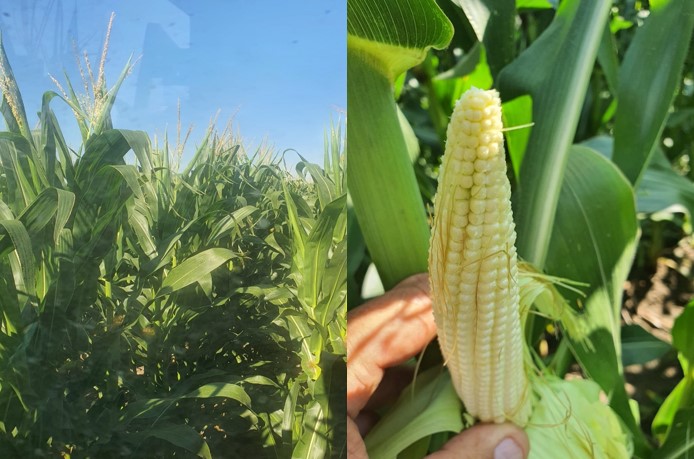
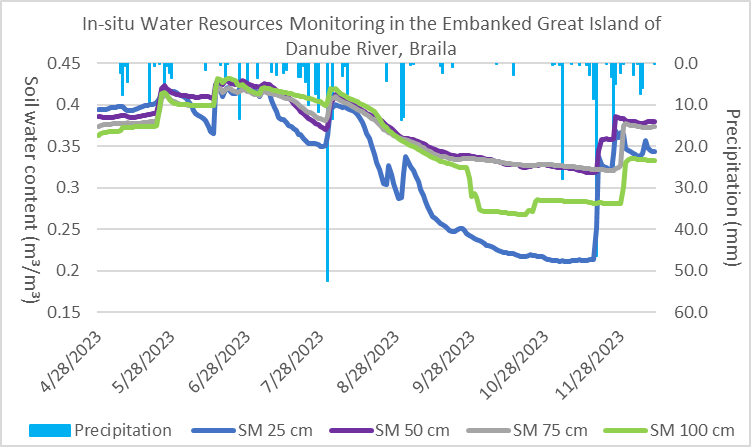
Irrigation on alluvial soils
The presence of alluvial soils along the Danube River Floodplain, replenished both through precipitation and capillary rise, requires the adaptation of irrigation regime depending on water table changes induced by the Danube River level variation. By monitoring soil moisture at different depths, depending on root development, farmers will be able to adjust the amount of water and the time to apply irrigation on these specific soils (Fig. 4).
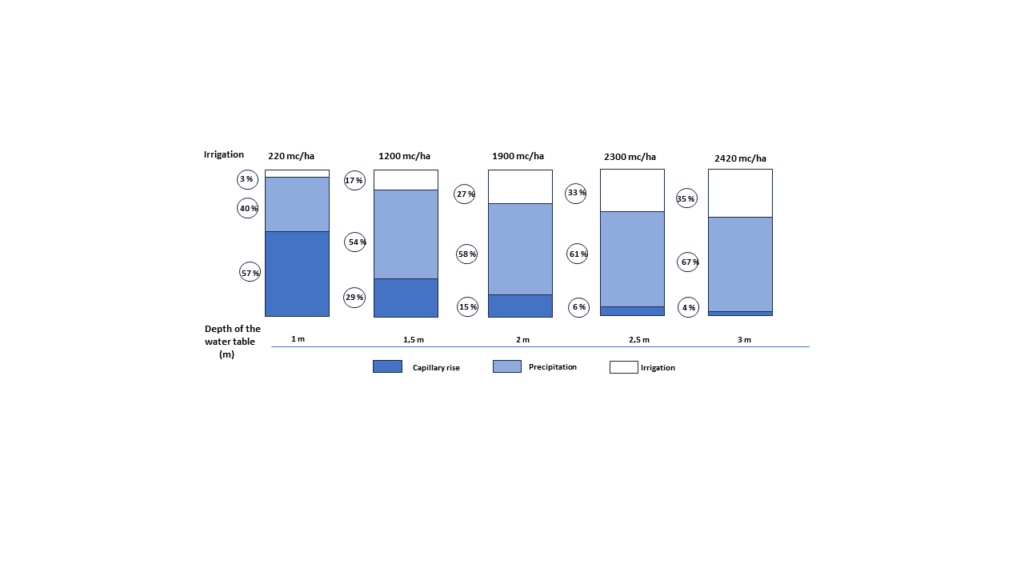
Improving irrigation practices as adaptation measure of irrigated agriculture to climate change
Improving irrigation practices in the Embanked Great Island of Danube River, Braila, by adjusting the water allocation depending on the availability of water resources and crop water needs, will help farmers to save much water and energy consumption resulting in lower CO2 emissions and improved efficiency overall.
Author: Zenaida Chitu, Cristian Stroia, Alin Ghiorghe, Alexandru Dumitrescu
Links
https://www.magdaproject.eu/news/
https://www.iwmi.cgiar.org/issues/water-storage/water-storage-and-climate-change/
https://www.droughtmanagement.info/literature/BC_MA_Soil_Water_Storage_Capacity_2005.pdf
Sources
Caian, M., Dumitru, A., Amihaesei, V., and Chitu, Z., 2023, Projected changes in Extreme Agro-Climate indicators at regional level (Romania) in The impact of climate change on agroforestry biodiversity – 14th of April 2023 / Biodiversity – guarantee of food security and food safety International Conference – 13th of October 2022 International Conference organised by the Center for Study and Research for AgroForestry Biodiversity “Acad. David Davidescu” – C.S.C.B.A.S, INCDA Fundulea and The Academy of Agricultural and Forestry Sciences – ASAS
Chitu, Z.; Tomei, F.; Villani, G.; Di Felice, A.; Zampelli, G.; Paltineanu, I.C.; Visinescu, I.; Dumitrescu, A.; Bularda, M.; Neagu, D.; et al. Improving Irrigation Scheduling Using MOSES Short-Term Irrigation Forecasts and In Situ Water Resources Measurements on Alluvial Soils of Lower Danube Floodplain, Romania. Water 2020, 12, 520. https://doi.org/10.3390/w12020520
Grumeza, N.; Kleps, C.; Merculiev, O., 1989, Irrigation Forecasting and Scheduling (Prognoza și Programarea Aplicării Udărilor în Sistemele de Irigații); Edition Ceres, București, Romania. (in Romanian)
P. Zhai, A. Pirani, S.L. Connors, C. Péan, S. Berger, N. Caud, Y. Chen, L. Goldfarb, M.I. Gomis, M. Huang, K. Leitzell, E. Lonnoy, J.B.R. Matthews, T.K. Maycock, T. Waterfield, O. Yelekçi, R. Yu, B. Zhou (Eds.), Climate Change 2021: the Physical Science Basis. Contribution of Working Group I to the Sixth Assessment Report of the Intergovernmental Panel on Climate Change [Masson-Delmotte, V., Cambridge University Press (2021)
Keywords
Irrigation scheduling, soil moisture monitoring, adaptation measure, climate change
